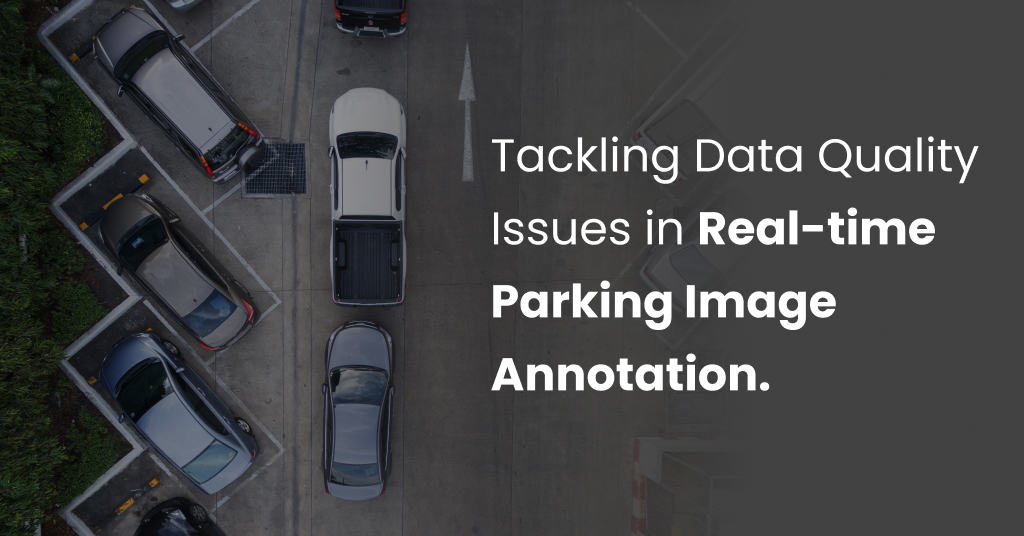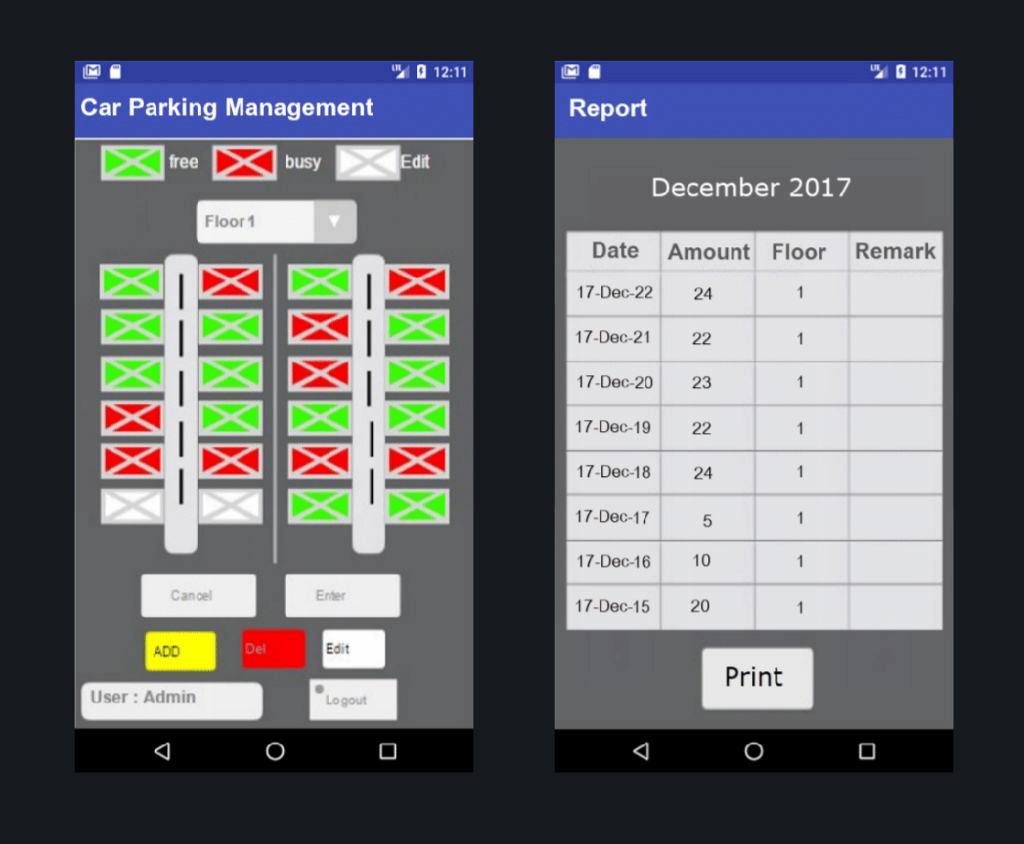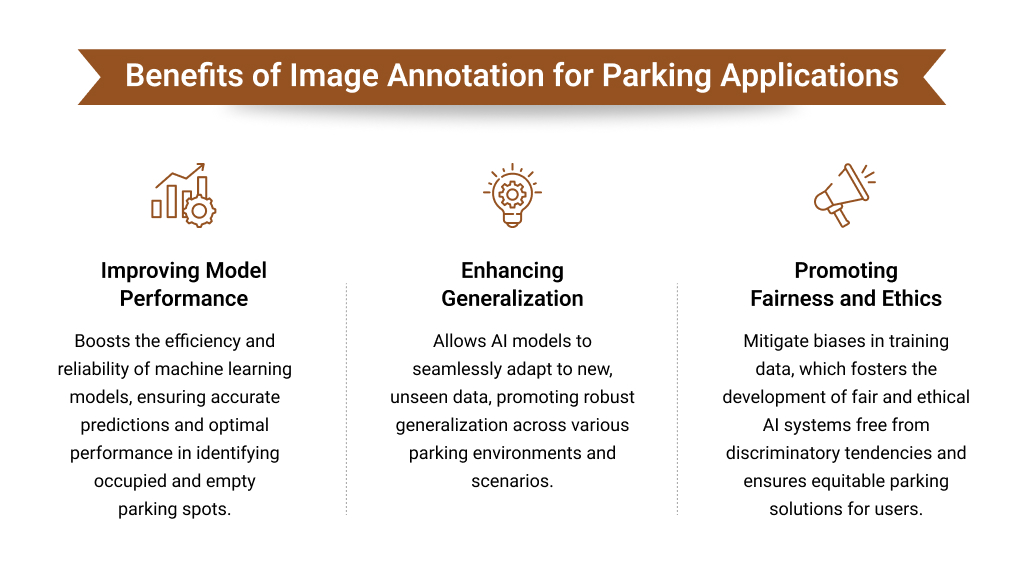
Real-time image annotation is transforming modern parking management systems. These systems rely on high-quality, continuously annotated datasets to train and improve their algorithms. However, the implementation of image annotation for parking is not without its hurdles. Quality issues can arise both in the raw data being captured and in the final annotated datasets used for training. These data quality issues can compromise the effectiveness of the entire parking management system.
In the following sections, we’ll explore the specific challenges faced in maintaining high-quality data during both the capture and real-time annotation phase, and discuss strategies to overcome them, ensuring more robust and effective parking applications.
Table of content
Understanding Real-Time Image Annotation in Parking Applications
Real-time image annotation is the process of labeling or tagging images captured by cameras in real time. In the context of AI in parking solutions, this technology is utilized to identify and monitor parking spaces, detect available spots, and manage illegal parking activities. By leveraging advanced image recognition algorithms, real-time image annotation helps streamline parking operations and enhances urban mobility.
The workflow of real-time image annotation in parking applications typically involves several steps:
- Image Capture: Cameras in parking areas take real-time pictures to monitor available parking spaces.
- Data Transmission: These images are sent to a central computer system for further processing.
- Image Annotation: Semi-automated software and human annotators analyze the images and identify and label parking spaces to ensure accuracy.
- Model Training: The annotated images are used to train machine learning models. These models learn to recognize parking spaces automatically, improving their accuracy and efficiency over time as they are exposed to more annotated data. The trained models find useful patterns and trends, such as peak usage times and areas with high demand.
- Output: The analyzed results are shown on user-friendly interfaces, providing real-time updates and insights to help manage parking more efficiently.

Data Quality Issues in Parking Applications
- Challenges in Capturing High-Quality Data
The first critical phase involves capturing raw images and videos using cameras and sensors installed in parking areas. Several data quality challenges may arise during this process due to:
- Inconsistent Lighting
Variations in lighting conditions pose significant challenges to data capture. For instance, bright sunlight can cause glare and overexposure, obscuring crucial details like parking space markings. Conversely, low-light conditions at night or during inclement weather may result in underexposed or grainy images. These fluctuations in lighting conditions make it difficult for annotation algorithms to accurately interpret data, potentially compromising the reliability of parking management systems.
Solution: To mitigate the impact of inconsistent lighting conditions, advanced camera systems equipped with dynamic exposure controls and infrared sensors can be deployed. These technologies adjust to varying light levels in real time, ensuring consistent image quality regardless of environmental conditions.
- Weather Conditions
Environmental factors such as rain, fog, or snow can significantly impact data quality. Raindrops on camera lenses can distort images, affecting visibility and making it challenging to detect and annotate parking spaces accurately. Similarly, fog and snow can obscure the field of view, further reducing image clarity and complicating the annotation process. These weather-related challenges pose obstacles to capturing high-quality data necessary for robust parking management algorithms.
Solutions: Installing weather-resistant cameras and protective housings can safeguard equipment from rain, fog, and snow. Additionally, integrating weather sensors with cameras allows automated adjustment of image processing algorithms to compensate for weather-induced visibility issues.
- Camera Angles and Image Dimension Variations
Cameras positioned at different heights or angles may capture parking spaces from varying perspectives, impacting the accuracy and completeness of data collection. Inconsistent camera angles can lead to gaps in coverage or distorted views of parking areas, complicating the annotation process. This can potentially mislead the algorithms designed to analyze parking space availability and occupancy. In addition, the variations in the images captured by these cameras make it challenging to standardize data for annotation purposes, further impacting the quality of datasets used to train parking management algorithms.
Solutions: Standardizing camera mounting heights and angles across parking facilities ensures consistent data capture. Using panoramic or multi-directional cameras reduces blind spots and provides comprehensive coverage of parking areas, minimizing the risk of incomplete data collection. Using image processing algorithms to normalize image dimensions can mitigate variability. Calibration tools and software can standardize image quality across different camera models and conditions.
- Sensor Installation Discrepancies
Differences in sensor placement and calibration contribute to data inconsistencies. Sensors installed at varying distances or angles relative to parking spaces may produce inaccurate readings of vehicle presence or occupancy. These discrepancies in sensor installation can lead to inconsistencies in the data used for annotation, affecting the overall quality and reliability of parking management systems.
Solutions: Calibrating sensors uniformly and periodically recalibrating them maintains accuracy in detecting vehicle presence and occupancy. Implementing sensor fusion techniques that integrate data from multiple sensors enhances reliability in real-time data interpretation.
- Data Quality Challenges in Annotated Datasets
After capturing the raw data, it undergoes an annotation process where relevant features, such as parking spaces and vehicles, are labeled. The quality of these annotated datasets is crucial for training effective parking management algorithms, but several data quality challenges may arise during this phase due to:
- Annotation Accuracy
Ensuring precise and correct annotations is essential for the reliability of annotated datasets. Human errors in manual annotation processes and limitations in automated annotation algorithms can lead to inaccuracies in labeling parking spaces, vehicles, or other relevant features. These inaccuracies compromise the integrity of training datasets, potentially leading to algorithms that misidentify parking spaces or fail to detect vehicles accurately.
Solutions: Implementing quality assurance protocols and automated validation checks during annotation processes can reduce human errors. Leveraging machine learning algorithms for semi-automated annotation assists in enhancing annotation accuracy and consistency.
- Managing Overlapping Frames
Efficiently handling redundant data captured by overlapping camera views is crucial. Multiple cameras covering the same area may capture duplicate frames, requiring integration to avoid redundancy and ensure consistency in annotated datasets. Mishandling overlapping frames can lead to inconsistencies in data analysis and algorithm training, affecting the accuracy and effectiveness of real-time parking management systems.
Solutions: Developing algorithms to intelligently merge overlapping frames and eliminate redundant data optimizes dataset quality. Utilizing techniques such as spatial and temporal clustering helps aggregate data from multiple views without duplication.
- Consistency and Quality
Maintaining consistent annotation quality across large datasets presents a significant challenge. Variations in annotation standards, practices among annotators, or changes in annotation guidelines can result in inconsistencies in data quality. These inconsistencies undermine the reliability of annotated datasets, affecting the performance and generalizability of parking management algorithms deployed in diverse parking environments.
Solutions: Establishing standardized annotation guidelines and providing continuous training for annotators ensures consistency in labeling practices. Using annotation management tools like Labelbox, Supervisely, and V7, which enforce adherence to guidelines and enable real-time collaboration, enhances dataset quality control.
- Handling Large Volumes of Data
Efficiently processing and managing large volumes of real-time data is essential. Continuous data streams from multiple cameras require robust storage and processing capabilities to ensure timely annotation and analysis. Inadequate data management practices can lead to delays in data processing, storage capacity issues, or compromised data integrity. Effective management of large data volumes is crucial for maintaining the reliability and performance of real-time image annotation systems in dynamic parking environments.
Solutions: Deploying scalable cloud-based storage solutions facilitates efficient data management and retrieval. Utilizing distributed processing frameworks such as Apache Spark or TensorFlow for parallelized data processing accelerates annotation and analysis of large datasets.

Acquiring High-Quality Training Datasets with Image Annotation Services
Given the data quality challenges that can arise during real-time image annotation for parking applications, leveraging professional image annotation services is a practical solution. Experts label your required images that can significantly enhance the training of models for parking management systems.
Recently, a Europe-based company developing a smart parking app faced several initial challenges while optimizing their parking system. The system, which monitors parking space availability in real-time using advanced technology, encountered issues such as:
- Varying dimensions between sensor images and map images
- Misalignment between the software’s 3D representation of vehicles and the original parking area
- Incorrect installation heights of sensors, leading to image discrepancies.
- Overlapping image frames of different vehicles
Unable to handle such a time- and resource-intensive task in-house, they partnered with us to overcome these challenges.
By leveraging image annotation techniques like the bounding box, we labeled occupied and empty parking spots at 600 frames per hour (FPH). Additionally, our team annotated vehicles, people, parking lines, obstacles, signs, trees, and other objects to provide a comprehensive knowledge of the elements present in the images.
This detailed approach enabled us to develop a robust training dataset, which allowed the client’s algorithm to accurately identify parking spaces, occupancy status, and vehicle types. As a result, the client has been able to successfully operate in various regions, including Europe, China, Japan, the USA, and other countries.
Advantages of Opting for Data Labeling Services
- Time efficiency: Frees internal resources from the labor-intensive task of annotation, allowing developers to focus on core algorithm development and system integration. This results in faster development cycles and quicker time-to-market for innovative parking technologies.
- Pixel-perfect accuracy: Provides diligently labeled images across various formats and types. This is essential for training computer vision models to detect and classify diverse objects in parking scenarios, including different vehicle types, pedestrians, and static obstacles.
- Expertise in annotation techniques: Utilizes experts skilled in various techniques such as polygon annotation, bounding boxes, and semantic segmentation. This ensures that datasets are tailored to specific needs, whether for precise vehicle outline detection or broader space occupancy classification.
- Consistency in annotation: Professional annotators follow standardized protocols, ensuring uniformity across large datasets. This consistency is crucial for developing unbiased and generalizable AI models for parking applications.
- Experience with diverse scenarios: Annotation services have experience working with a range of parking scenarios, from multi-story garages to open-air lots, and in varying environmental conditions. This results in datasets that capture a wide array of real-world situations, enhancing the adaptability of the parking management systems.
To Conclude
Addressing data quality challenges in real-time image annotation for parking applications is crucial due to the advancement of smarter urban mobility solutions. As cities grow and urban spaces become more congested, the demand for efficient parking solutions continues to rise. Future parking management systems must leverage high-quality annotated datasets to enhance their accuracy and adaptability.
By investing in advanced annotation techniques and technologies, businesses can ensure that their parking systems are equipped to handle diverse scenarios and varying environmental conditions. Outsourcing data labeling services further streamlines the process, allowing businesses to focus on innovation and core competencies while ensuring the highest standards of data quality and accuracy.
High-quality training datasets empower parking management systems to deliver reliable, scalable, and sustainable solutions that meet the evolving needs of modern cities.
